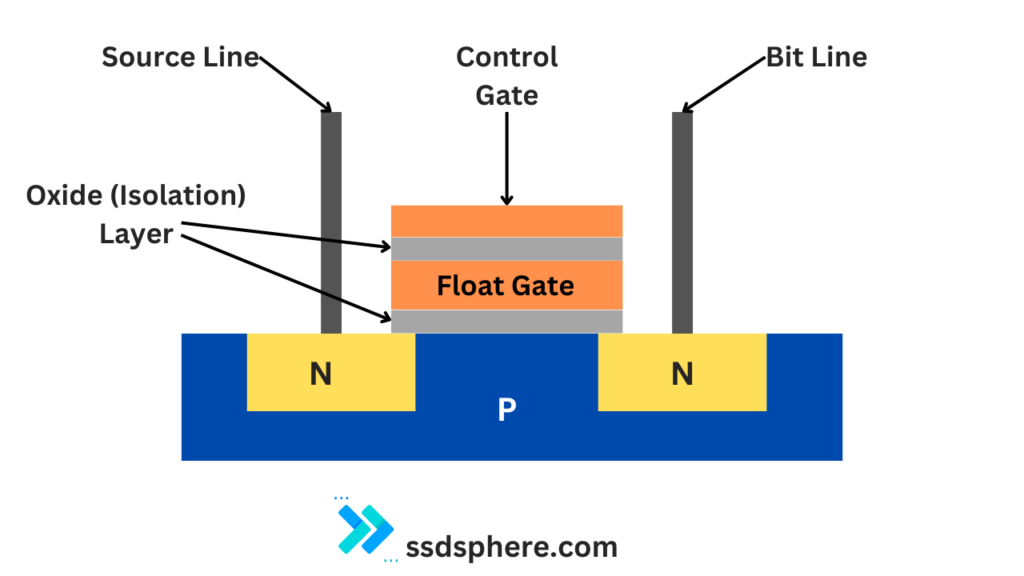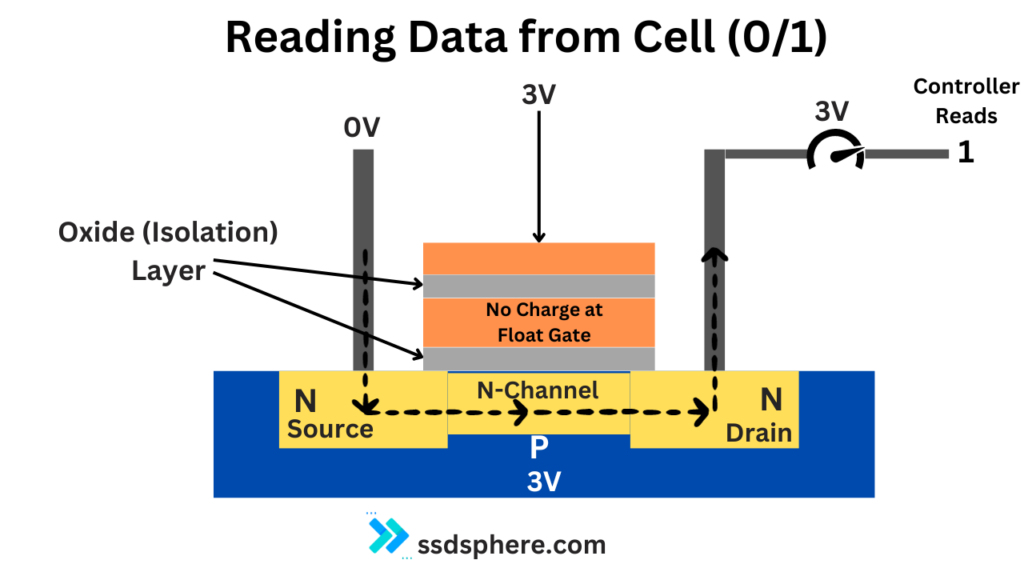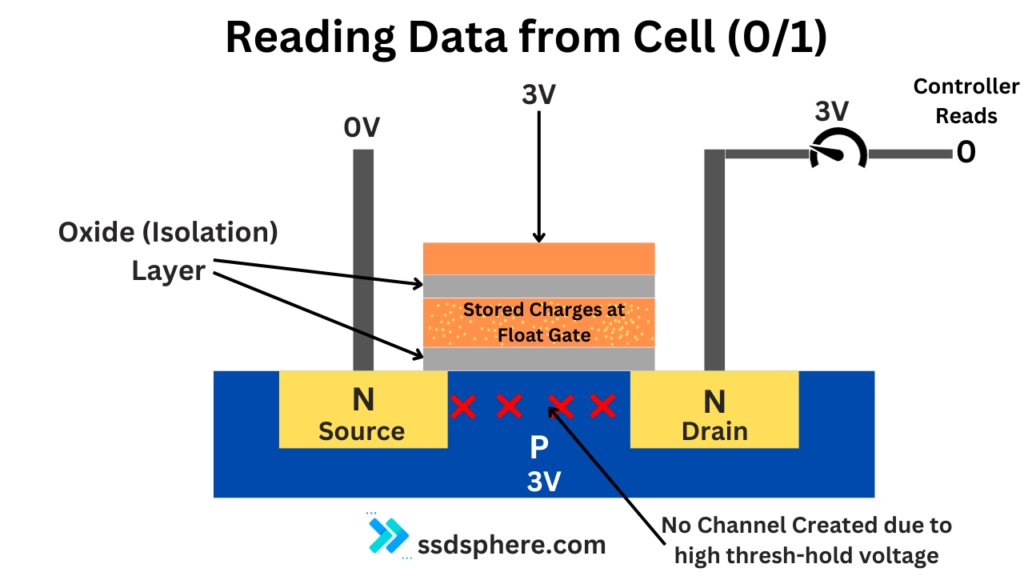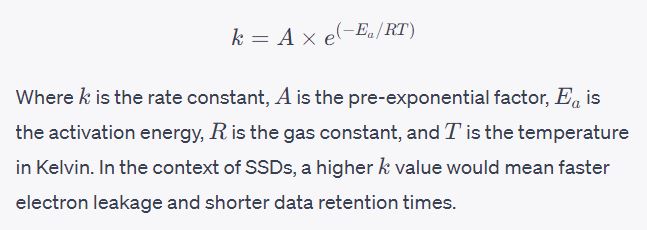Data retention in Solid State Drives (SSDs) is an essential yet frequently underestimated facet of storage technology. As SSDs increasingly become the go-to storage option, replacing traditional Hard Disk Drives (HDDs) in everything from laptops to data centers, understanding the nuances of SSD data retention becomes ever more critical.
Unlike HDDs, SSDs utilize NAND flash memory, a type of non-volatile storage that has its own set of data retention characteristics. These characteristics are influenced by a variety of factors, including but not limited to, temperature variations, wear leveling algorithms, and the overall capacity of the drive.
The importance of data retention extends beyond the technical realm; it has practical implications for both individual consumers and large enterprises. For example, data retention impacts the longevity and reliability of the storage device, which in turn affects data integrity and can have financial repercussions.
This article aims to provide a comprehensive, technical examination of SSD data retention, exploring the science behind it, the factors that influence it, and its real-world implications. By understanding these elements, one can make more informed decisions about SSD selection and maintenance, optimizing both performance and longevity.
What is Data Retention in SSDs?
The ability to hold the data inside its NAND Flash cells is called the data retention of an SSD. Because the data is stored in the form of a charge on the floating gate in a transistor, this charge can’t stay there permanently. Charge leakage is a normal phenomenon in electronics and there will be a time when your stored data will get faded away without any reason.
So, to retain data, SSDs use a technology called wear-leveling whose purpose is to divide the wear on the cells but can work for data retention as well. In simple words, wear leveling makes sure that the damage done to the cells (oxide layers) is properly divided. So, the data is generally moved from block to block hence refreshing the states of the cells. This results in data refreshing and the SSD eventually retains the data for longer.
However, if you are SSD is sitting idle and you have important data stored on it, it needs your attention. Because no TRIM or wear leveling is happening on the drive, the charges can fade away and the controller has no information about their locations. Normally, an SSD starts to lose its data within 2 to 5 years of non-usage. In some drives, this can start to happen in just one year.
The Science Behind Data Retention
Fact 1: Electron Trapping is what makes SSDs store data
In NAND flash memory, each memory cell represents a bit of data (in SLC), or multiple bits (in MLC, TLC, and QLC) by trapping or releasing electrons in a floating gate. When a voltage is applied to the control gate of the memory cell, electrons move through the oxide layer and get trapped in the floating gate, changing the threshold voltage of the cell. This change in threshold voltage is used to represent binary data.
So, whenever you are saving any information on your drive, it is stored in the form of 0s and 1s inside millions of cells inside the NAND. The amount of charge inside the floating gate determines the binary code which is then interpreted by the CPU. In simple words, your photos and videos are stored in the form of 0s and 1s inside the drive. The drive itself doesn’t understand 0s and 1s. It just calculates the amount of charge inside the tiny transistors whenever the system demands the stored data. This happens at a pace that our brains can’t imagine.



Fact 2: Data Retention Time depends on the current leakage
The trapped electrons in the floating gate are what enable data retention. However, these electrons can leak over time due to quantum tunneling or thermal excitation. The rate of this leakage determines the data retention time of the SSD. Typically, consumer-grade SSDs are designed to retain data for about one to two years when powered off, although this can vary based on several factors.
Fact 3: Wear Leveling makes sure the SSDs keep working for longer
Wear leveling is a technique used to extend the lifespan of SSDs. Since NAND flash memory cells have a limited number of program/erase (P/E cycles), constantly writing and erasing data in the same cells would lead to quicker wear-out. Wear leveling algorithms ensure that writes and erases are distributed evenly across all blocks, thereby extending data retention time.
Wear Leveling isn’t actually developed to increase the data retention time but the fundamental purpose is to divide the wear. But, it works indirectly for increased data retention in the active drives.
Fact 4: Read-Reclaim Process helps with SSD life
Over time, the charge in a NAND cell can degrade, making it difficult to read the data accurately. SSDs use a process called read-reclaim, where the data from a weak cell is read and rewritten into a new cell, effectively refreshing the charge and improving data retention.
Fact 5: Error-Correcting Codes (ECC) is essential for data retention
To further ensure data integrity, SSDs employ Error-Correcting Codes (ECC). When data is read back, ECC algorithms check for errors and correct them if possible, thereby enhancing data retention capabilities.
Factors Affecting Data Retention
These factors range from inherent characteristics of NAND flash memory to external conditions like temperature. Below, we explore these elements in detail.
Factor 1: Higher Temperature means higher leakage
Temperature plays a significant role in the data retention capabilities of SSDs. Higher temperatures can accelerate electron leakage in NAND flash memory cells, reducing the data retention time. Conversely, lower temperatures can slow down this process, but they also make it more challenging to read data accurately. Manufacturers often specify data retention capabilities under controlled temperature conditions, usually around 25-30°C.
Factor 2: Better Wear Leveling means longer life
As discussed earlier, wear leveling is a technique employed to distribute write and erase cycles evenly across the memory cells in an SSD. Since each cell has a finite number of program/erase (P/E) cycles, wear leveling helps in extending the overall lifespan of the SSD. However, as the number of P/E cycles increases, the ability of the memory cells to retain data for extended periods diminishes.
Factor 3: SSD storage space and wear leveling
The capacity of an SSD can also influence its data retention capabilities. Higher-capacity drives often have more NAND chips, which allows for better wear leveling and, consequently, potentially longer data retention times. However, higher-capacity drives may also be subjected to more intensive data writes, which could counteract this benefit.
Factor 4: Data Encryption may reduce SSD lifespan
Data encryption can add another layer of complexity to data retention. Encrypted data may require periodic re-encryption to maintain its integrity over time, especially if the encryption keys are stored in volatile memory. This process can affect how long an SSD can reliably retain encrypted data.
Factor 5: Firmware and Controller Algorithms
The firmware and controller algorithms in an SSD manage various functions, including wear leveling, garbage collection, and error correction. These algorithms can have a direct impact on data retention by optimizing how data is read from and written to the NAND flash memory.
Factor 6: Age of the SSD
As SSDs age, their components wear out, affecting their ability to retain data. Older SSDs are generally more susceptible to data loss due to electron leakage or other degradation mechanisms.
How long can SSD store data without power?
The time it takes for data to be lost on an unused SSD can vary widely depending on several factors such as the type of NAND flash memory, the age of the SSD, and the environmental conditions where the SSD is stored. However, according to JEDEC standards, a consumer-grade SSD is generally expected to retain data for about one year when stored at room temperature (around 30°C) without power.
For more specific types of NAND:
- SLC (Single-Level Cell) can retain data for up to 10 years.
- MLC (Multi-Level Cell) typically has a data retention period of around 5-7 years.
- TLC (Triple-Level Cell) can retain data for about 2-5 years.
- QLC (Quad-Level Cell) generally has a data retention period of 1-3 years.
It’s important to note that these are general estimates and actual data retention can vary. Always refer to the manufacturer’s specifications for the most accurate information.
Temperature and its impacts on data retention
1. Electron Leakage and Thermal Activation
Now we know that the electrons leak over time. But, the electrons can escape over time due to quantum tunneling or thermal activation. Elevated temperatures can accelerate this process. For example, at temperatures around 85°C, the rate of electron leakage can increase by approximately 10-15% compared to standard operating temperatures of around 25-30°C.
2. Arrhenius Equation and Activation Energy
The Arrhenius Equation is often used to model the temperature dependence of reaction rates, including electron leakage in NAND cells. The equation is:

According to JEDEC standards, consumer-grade SSDs are generally tested for data retention at a temperature of 30°C when powered off. Enterprise SSDs, which are often subjected to more rigorous conditions, may be tested at higher temperatures, sometimes up to 40°C.
3. Data Retention Time Variability
Studies have shown that data retention time can vary significantly depending on the temperature. For instance, an SSD that retains data for two years at 25°C might see its data retention time halved to just one year if consistently exposed to temperatures around 40°C.
4. Error Rates
Higher temperatures not only affect data retention but also increase the likelihood of read and write errors. Error rates can increase by up to 1-2% for every 5°C rise in temperature, necessitating more frequent use of Error-Correcting Codes (ECC) and thus reducing the overall efficiency of the SSD.
| Temperature (°C) | Error Rate Increase (%) |
|---|---|
| 25 | 0 |
| 30 | 0.5 |
| 40 | 1.5 |
| 50 | 2 |
5. Comparison of Data Retention Time Based on Temperature
| Temperature (°C) | Estimated Data Retention Time (Years) |
|---|---|
| 25 | 2 |
| 30 | 1.8 |
| 40 | 1 |
| 50 | 0.5 |
| 60 | 0.25 |
Industry Standards for Data Retention in SSDs
Industry standards serve as a benchmark for evaluating the performance and reliability of Solid State Drives (SSDs), including their data retention capabilities. These standards are often set by organizations like JEDEC (Joint Electron Device Engineering Council) and provide guidelines that manufacturers adhere to when designing and testing SSDs. Below, we explore these standards in detail.
JEDEC Standards
JEDEC is one of the leading standard-setting organizations for microelectronics, including NAND flash memory used in SSDs. According to JEDEC’s JESD218 standard, consumer-grade SSDs are generally expected to retain data for one year at room temperature (around 30°C) when powered off. For enterprise SSDs, the data retention requirements can be more stringent due to the more demanding operational environments.
| SSD Type | Data Retention Time (Years) | Test Temperature (°C) |
|---|---|---|
| Consumer-grade | 1 | 30 |
| Enterprise-grade | 0.5 – 1 | 40 |
Data Retention Testing
Manufacturers often conduct rigorous testing to ensure their SSDs meet or exceed industry standards for data retention. These tests involve writing data to the SSD and then storing it under controlled environmental conditions for a specified period. The SSD is then read to verify data integrity.
Temperature Considerations
As per JEDEC standards, testing for data retention often occurs at different temperatures to simulate various operating conditions. For consumer SSDs, tests are usually conducted at 30°C, while enterprise SSDs may be tested at temperatures up to 40°C or higher.
Endurance Rating
Another important metric is the SSD’s endurance rating, usually expressed in Drive Writes Per Day (DWPD) or Terabytes Written (TBW). This rating gives an idea of how many write/erase cycles an SSD can handle over its lifetime, which indirectly impacts its data retention capabilities.
Real World Implications
The technical aspects of SSD data retention are not just academic exercises; they have tangible implications in real-world scenarios. From individual consumers to large-scale data centers, understanding data retention is crucial for optimizing SSD performance and longevity. Here, we explore some of these real-world implications.
Consumer Use
For the average consumer, data retention is often a hidden concern until it becomes a problem. Whether it’s losing family photos or important documents, the impact can be both emotionally and practically significant. Understanding that SSDs have a finite data retention period, especially when powered off for extended times, can guide better data backup strategies.
Enterprise Use
In enterprise environments, the stakes are even higher. Data loss can lead to financial repercussions and damage to brand’s reputation. Enterprise SSDs are often subjected to more intensive write and erase cycles, making their data retention characteristics different from consumer-grade SSDs. This necessitates specialized SSDs with better endurance and data retention capabilities, often at a higher cost.
Data Centers
Data centers are perhaps where the implications of SSD data retention are most pronounced. These facilities often operate 24/7 and are subjected to varying environmental conditions. A proper understanding of data retention can guide optimal temperature control strategies, affecting not just data integrity but also energy costs.
Legal and Regulatory Compliance
Certain industries have strict regulations regarding data retention for compliance with laws such as GDPR, HIPAA, or Sarbanes-Oxley. Failure to adhere to these can result in hefty fines and legal complications. Understanding the data retention capabilities of SSDs used in such environments is crucial for compliance.
Long-Term Archiving
For long-term data archiving, understanding SSD data retention is essential. Traditional methods like magnetic tapes may still be more suitable for archival purposes due to their longer data retention capabilities compared to SSDs.
Portable Storage
Portable SSDs are increasingly popular for their speed and convenience. However, they are also susceptible to varying temperatures and other environmental factors that can affect data retention. Awareness of these factors can guide better storage practices.
In summary, the real-world implications of SSD data retention are far-reaching, affecting individual consumers, enterprises, and specialized applications like data centers and long-term archiving. Understanding these implications can guide better decision-making and strategies for data storage and management.
Common Myths and Facts about SSD Data Retention
| Common Myths | Facts |
|---|---|
| SSDs retain data indefinitely | Electron leakage can cause data loss |
| Temperature doesn’t affect SSDs | Higher temperatures can reduce retention |
| All SSDs have the same retention time | Varies based on type, usage, and age |
How to improve data retention in SSDs?
Improving data retention in SSDs is not just a matter of buying a high-quality drive; it also involves ongoing maintenance and understanding the factors that influence data retention. However, there are hardly any major methods you can use to enhance SSD data retention. You can just pick the SSD with the best possible NAND Flash and other components. Backups are very important in case of important data. The things, however, which you can do are as follows.
1. Firmware Updates
Manufacturers often release firmware updates that include optimizations for wear leveling, garbage collection, and error correction. Keeping your SSD’s firmware up-to-date can improve its data retention capabilities by ensuring that it operates with the latest algorithms designed to extend lifespan and reliability.
2. Optimal Operating Conditions
Maintaining your SSD in an environment with stable temperatures can significantly improve data retention. As discussed earlier, extreme temperatures can accelerate electron leakage in NAND flash memory cells. Therefore, keeping the SSD at a moderate temperature, ideally between 25-30°C, can enhance data retention.
3. Regular Data Refresh
For SSDs that are not frequently accessed or are used for long-term storage, it’s advisable to power them up and read the stored data periodically. This process, known as data refreshing, can help in redistributing the trapped electrons in the NAND cells, thereby extending data retention time.
4. Using the TRIM Command
The TRIM command helps the SSD controller identify which data blocks are no longer in use and can be wiped internally. This improves the efficiency of the garbage collection process, indirectly aiding in better data retention by ensuring that write and erase cycles are more evenly distributed.
5. Monitoring Software
Many manufacturers provide software tools that allow you to monitor the health of your SSD, including its temperature, the number of write/erase cycles it has undergone, and its estimated remaining lifespan. These tools can be valuable for preemptive actions to improve data retention.
6. Error-Correcting Codes (ECC)
While ECC is generally built into the SSD’s controller, some enterprise-level SSDs allow for customizable ECC settings. Increasing the strength of ECC can improve data retention by correcting more errors, although this may come at the cost of slightly reduced performance.
7. Secure Data Erase
Before decommissioning an SSD, a secure erase can reset the NAND cells, effectively ‘refreshing’ them. This can be particularly useful for SSDs that will be repurposed, as it can extend the data retention capabilities of the drive.
In summary, improving data retention in SSDs involves a multi-faceted approach that includes firmware updates, environmental controls, and proper data management strategies. However, if you are not using the SSD and it is sitting idle without any power input, there is hardly you can do to make it retain data for longer.
Types of NAND Flash Memory and Their Impact on Data Retention
SLC, MLC, TLC, QLC: What Do They Mean for Data Retention?
NAND flash memory, the cornerstone of SSD technology, comes in various types, each with its own set of characteristics that influence data retention. The primary types are Single-Level Cell (SLC), Multi-Level Cell (MLC), Triple-Level Cell (TLC), and Quad-Level Cell (QLC). Here, we explore how each type impacts data retention.
1. Single-Level Cell (SLC)
SLC is the simplest and most robust form of NAND flash memory. In SLC, each memory cell stores just one bit of data. This simplicity allows for faster write speeds and fewer errors, making SLC the best option for data retention. SLCs are known to retain data for up to 10 years under optimal conditions.
2. Multi-Level Cell (MLC)
MLC stores two bits of data per cell, doubling the storage capacity compared to SLC. However, this comes at the cost of reduced data retention capabilities. The more bits you store in a cell, the more susceptible it is to errors, especially as the number of write/erase cycles increases. MLCs typically have a data retention period of around 5-7 years.
3. Triple-Level Cell (TLC)
TLC takes it a step further by storing three bits per cell. While this increases storage capacity, it also makes the cells more prone to errors, reducing the data retention time. Under optimal conditions, TLCs can retain data for about 2-5 years.
4. Quad-Level Cell (QLC)
QLC is the last type of NAND Flash that you would want to go for. While it offers the highest storage density, it has the lowest data retention capabilities among the four types. QLCs are generally suitable for read-heavy applications and are not recommended for scenarios where long-term data retention is crucial. Their data retention period is typically around 1-3 years.
| NAND Type | Bits per Cell | Data Retention Time (Years) |
|---|---|---|
| SLC | 1 | 10 |
| MLC | 2 | 5-7 |
| TLC | 3 | 2-5 |
| QLC | 4 | 1-3 |
In summary, the type of NAND flash memory used in an SSD has a direct impact on its data retention capabilities. SLC offers the best data retention but is also the most expensive. On the other end, QLC offers high storage density but has the lowest data retention time. Understanding these trade-offs is crucial for selecting the right SSD for your specific needs.
The Role of Over-Provisioning in SSD Data Retention
Over-provisioning refers to the practice of including extra NAND flash memory cells in an SSD that are not accessible to the user but are available to the SSD’s controller. This extra space serves as a buffer, allowing the controller to more effectively manage wear leveling and garbage collection. By distributing write and erase cycles more evenly across the NAND cells, over-provisioning enhances the SSD’s endurance and, consequently, its data retention capabilities. In essence, over-provisioning acts as a safeguard that extends the lifespan of an SSD, making it a crucial feature for optimizing data retention.
Voltage Levels, Garbage Collection, and RAID Configurations: A Trio of Influencers on SSD Data Retention
Voltage levels in NAND flash memory play a critical role in data retention, as they determine the state of memory cells and, by extension, the integrity of stored data. Variations in voltage can lead to read errors, affecting the SSD’s ability to retain data over time.
Garbage collection, the process by which SSD controllers reclaim space from deleted or modified files, also impacts data retention. Efficient garbage collection algorithms can extend SSD longevity by optimizing write and erase cycles, thereby enhancing data retention capabilities.
Lastly, SSDs in RAID (Redundant Array of Independent Disks) configurations present unique challenges. While RAID offers benefits like redundancy and improved performance, it also introduces complexities in wear leveling and garbage collection that can affect data retention. Understanding these three factors—voltage levels, garbage collection, and RAID configurations—provides a more nuanced view of how to optimize data retention in SSDs.
Frequently Asked Questions
Humidity itself doesn’t directly affect the data retention of NAND flash memory in SSDs. However, high humidity can lead to condensation and moisture, which can cause electrical issues and corrosion, indirectly affecting data retention.
Storing an SSD in a cold environment can slow down electron leakage, potentially improving data retention. However, SSDs also have operational temperature ranges, and storing them in conditions that are too cold could lead to other issues, such as increased error rates.
Unlike HDDs, SSDs are not susceptible to magnetic fields. The data in SSDs is stored electrically, not magnetically, so magnetic fields do not affect data retention in SSDs.
No, defragmentation is not recommended for SSDs. It can actually reduce the lifespan of an SSD by increasing the number of write/erase cycles, which in turn could negatively impact data retention.
The file system format generally does not have a direct impact on data retention. However, some file systems may handle garbage collection and wear leveling more efficiently than others, indirectly affecting data retention.
Once an SSD reaches the end of its data retention period, it becomes increasingly likely that the stored data will be lost or corrupted. It’s advisable to replace or refresh the SSD before this point.
SSD Data Retention is a little controversial topic. Some manufacturers do not even highlight their TBW and endurance numbers on the websites. However, the products are marketed as premium ones targeting high-end users.
The issue lies in the technology itself. These intricate NAND Flash cells which we were talking about are fabricated within the structures having widths in nano-meters. So, you can’t actually give 100% assurance of any product’s age.
Although the drives are coming with new and new systems for enhanced data reliability but having a proper backup of your important data is still very important.
Thanks for reading!